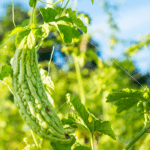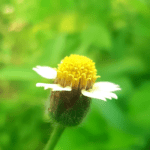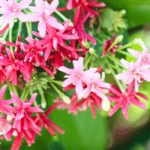From Seed to Table: Some Vegetables to Plant Now in North IndiaThe months of March to April are ideal for beginning planting when it comes to cultivating veggies in North India. With the onset of spring, the climate is perfect for a wide range of veggies to flourish. Here are some suggestions for growing some of the most well-liked vegetables at this time, as well as some other possibilities.
From Seed to Table: Some Vegetables to Plant Now in North India
The months of March to April are ideal for beginning planting when it comes to cultivating veggies in North India. With the onset of spring, the climate is perfect for a wide range of veggies to flourish. Here are some suggestions for growing some of the most well-liked vegetables at this time, as well as some other possibilities.
- Okra (Bhindi) – Warm-season veggie okra enjoys warmth and sunlight. Okra seeds should be sown straight into the ground in an area with lots of sunlight. Ensure sure the soil is well-draining and has lots of organic matter. Every few weeks, fertilise the plants with nitrogen-rich fertiliser and water them regularly. By 50–60 days, you should be able to harvest your okra pods.
- Brinjal (Eggplant) – Indian eggplant, also known as brinjal, is a well-known vegetable. Start the seeds indoors in February or March and then transplant them into the garden in April. Choose a spot with soil that drains properly and full sun exposure. Water the plants regularly and fertilise them with phosphorus-rich fertiliser every few weeks. After seeding, you should be able to harvest your eggplants 90 to 100 days later.
- Tomato – Growing tomatoes in your backyard is simple, and they are a common ingredient in many Indian recipes. Transplant the seeds into the garden in April after starting them indoors in February or March. Choose a spot with soil that drains properly and full sun exposure. Regularly water the plants and fertilise them each week with nitrogen-rich fertiliser. You can expect to harvest your tomatoes within 60-80 days of sowing.
- Beans – Pole beans and bush beans are only two of the many varieties of simple-to-grow beans. Directly plant the seeds into the ground in an area that receives direct sunshine. Ensure sure the soil contains a lot of organic matter and is capable of draining well. Every few weeks, fertilise the plants with nitrogen-rich fertiliser and water them regularly. Your beans should be ready for harvesting 50 to 60 days after planting.
- Kakri (Armenian Cucumber) – Sometimes referred to as Kakri, is a cool vegetable that tastes wonderful in salads and sandwiches. Directly plant the seeds into the ground in an area that receives direct sunshine. Ensure sure the soil contains a lot of organic matter and is capable of draining well. Regularly water the plants and provide them with fertiliser which is with nitrogen-rich, every few weeks. Cucumbers can be harvested within 50-60 days of planting.
Vegetables to add to your list:
- Bell Pepper (Shimla Mirch) – Peppers are simple to grow and are available in a range of hues, forms, and sizes. They need constant sunlight and do best in warm climates. Transplant the seeds into the garden in April after starting them indoors in February or March. Ensure sure the soil contains a lot of organic matter and is capable of draining well. Every few weeks, fertilise the plants with nitrogen-rich fertiliser and water them regularly. After seeding, you should be able to harvest your peppers 70 to 90 days later.
- Bottle Gourd (Lauki) – Popular vegetable bottle gourd is high in minerals and low in calories. Directly plant the seeds into the ground in an area that receives direct sunshine. Ensure sure the soil contains a lot of organic matter and is capable of draining well. Every few weeks, fertilise the plants with nitrogen-rich fertiliser and water them regularly. Your bottle gourds should be ready for harvesting 70 to 90 days after seeding.
- Radish (Mooli) – Radishes are a fantastic choice for novices because they are simple to grow and mature quickly. Directly plant the seeds into the ground in an area that receives direct sunshine. Ensure sure the soil contains a lot of organic matter and is capable of draining well. Every few weeks, fertilise the plants with nitrogen-rich fertiliser and water them regularly. Within 30 to 40 days of planting, you may expect to harvest your radishes.
- Spinach (Palak) – Spinach is a nutrient-rich vegetable that tastes wonderful in cooked foods, smoothies, and salads. Directly plant the seeds in the ground in a spot that receives some shade. Ensure sure the soil contains a lot of organic matter and is capable of draining well. Every few weeks, fertilise the plants with nitrogen-rich fertiliser and water them regularly. After sowing, you should be able to harvest your spinach in 40 to 50 days.
- Carrots (Gajar) – A root vegetable that is rich in vitamins and antioxidants is the carrot. Directly plant the seeds into the ground in an area that receives direct sunshine. Ensure sure the soil contains a lot of organic matter and is capable of draining well. Every few weeks, treat the plants with phosphorus-rich fertiliser and give them regular irrigation. Your carrots should be ready for harvesting 70 to 80 days after planting.
- Beets (Chukandar) – Beets are a versatile vegetable that can be eaten fresh or cooked. Directly plant the seeds into the ground in an area that receives direct sunshine. Ensure sure the soil contains a lot of organic matter and is capable of draining well. Regularly water the plants and fertilise every few weeks with fertiliser high in phosphorus. Your beets should be ready for harvesting 60 to 70 days after planting.
- Cauliflower (Phool Gobhi) – The cool-season vegetable cauliflower is simple to grow. Transplant the seeds into the garden in April after starting them indoors in February or March. Choose a spot with well-draining soil that receives some shade. Every few weeks, fertilise the plants with nitrogen-rich fertiliser and water them regularly. Cauliflower can be harvested 70 to 80 days after planting.
You may want to think about growing herbs like mint, coriander, and basil in addition to the veggies mentioned above. These herbs can be used to flavour your food and are simple to grow.
In conclusion, March through April in North India might be a fruitful time to plant veggies. If you take the necessary precautions and care, you can reap a plentiful harvest of fresh, nutritious veggies. There are many possibilities available, so start working on your garden now whether you’re an expert or a novice.







